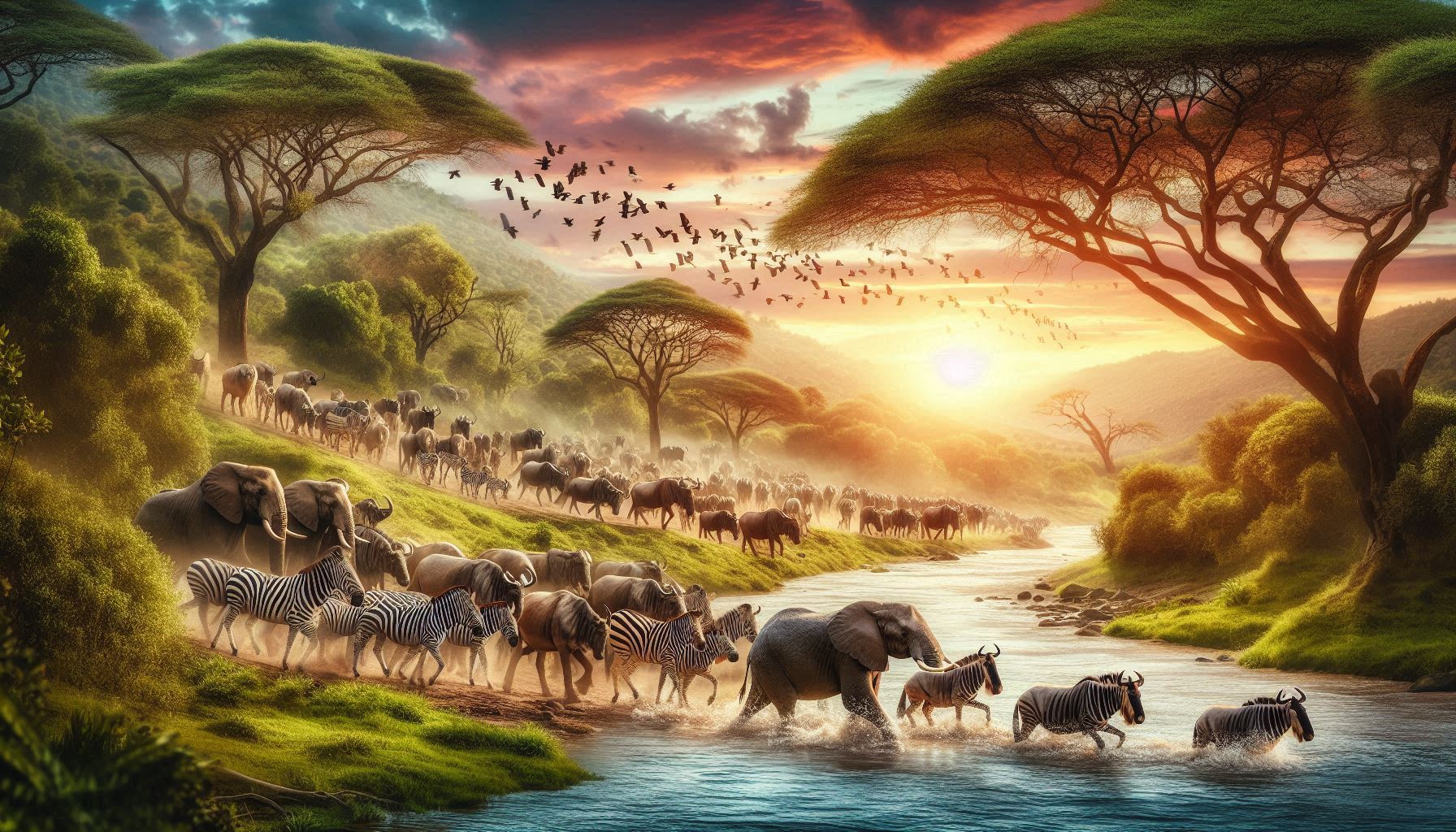While researching creatures that migrate long distances, such as birds and turtles, I came across stories of animals that also migrate long distances on land. When I think of the vast, unrestricted territories of the sky and sea, and the wind and ocean currents that help with migration, I imagine that migration on land is very difficult. There are slopes such as mountains, cliffs, and rivers, and there is nothing to help them move, so they have to constantly move on their own. It’s amazing that animals can migrate long distances on land.
The animal that migrates the longest distances is the wildebeest, a member of the bovidae family in Africa. They migrate in search of water and grass during the dry season, and can travel up to 3,000km in a year. Wildebeests migrate to distant thunderstorms and clouds, and sometimes sense rain 50km away and move on. The total distance they travel chasing the rain is 3,000km. Not only is the distance they migrate incredible, but the numbers of their herds are also incredible, with a massive migration of around 1.3 million animals.
https://zoozoodiary.com/facts/wildebeest
It is believed that animals that migrate long distances often play a role in nutrient circulation, since the areas where they feed are far from the areas where they defecate, are preyed upon, and become carcasses. Wildebeest also play a role in nutrient circulation, but on a much larger scale. When wildebeest cross the river in large numbers, many of them are swept away by the current and lose their lives, and it is said that over 1,100 tons of wildebeest carcasses support the river’s ecosystem.The bones of wildebeest seem to play an especially important role, as they slowly decompose and continue to supply phosphorus for about seven years, and the microbial membranes on the bones, called biofilms, become food for fish. The existence of wildebeest is amazing.
https://natgeo.nikkeibp.co.jp/atcl/news/17/062100234
It seems that the wildebeests have companions who migrate with them, and they move together with the zebras, helping each other along the way. Zebras are tall and have good eyesight, so they can easily spot enemies from afar, while wildebeests are short and have good senses of smell and hearing, so they are sensitive to nearby presences. The zebras look ahead and move, and the wildebeests follow behind, feeling safe. Also, wildebeests and zebras eat different parts of the grass, with zebras eating the top part of the grass and wildebeests eating the remaining base part, which is why they can coexist. It’s a well-balanced symbiotic relationship.
https://cheer7arch.com/blog/gnu-zebra-relationship
In addition, African straw-eared flying foxes, which have a wingspan of up to 1m, seem to migrate in huge numbers, with an estimated 8 to 10 million individuals. The seeds of the fruit they eat are scattered all over the place through excretion on their way back, enriching the ecosystem. The scale of the numbers is also amazing. It’s like a rain of nutrients.
https://www.newsweekjapan.jp/mobile/stories/world/2021/06/post-96449_6.php
Long-distance migration requires a vast amount of land, so we’ve talked a lot about Africa, but it seems that there are animals that migrate long distances on other continents as well, such as the Mongolian gazelle, which travels over 400km in a straight line, and the pronghorn of Yellowstone, which travels about 270km every year. Although it’s not an animal, there is a type of crab that migrates in large groups from the forest to the sea during the monsoon season in large groups of 50 to 100 million crabs. They are said to be red crabs from Christmas Island, and 100 million is an incredible number.
I researched two themes: long-distance migration and migration in large groups, and both seem to have a large impact on the ecosystem. The scale of both distance and numbers is epic. Great animal migrations are amazing. The scale of the Earth is amazing.


